Abstract
Two homozygous mutant lines of barley (Hordeum vulgare L.) R3202 (Lt1b/Lt1b) and R3004 (Lt2/Lt2), are resistant to lysine plus threonine. They contain aspartate kinase isoenzymes with lost or decreased feedback sensitivity to lysine in either isoenzyme AKII (R3202) or isoenzyme AKIII (R3004). A homozygous double mutant line (Lt1b/Lt1b, Lt2/Lt2) has now been constructed that grows vigorously on 8 millimolar lysine, 8 millimolar threonine, and 1 millimolar arginine. Both AKII and AKIII from the double mutant have altered lysine sensitivities, identical to those previously observed in R3202 and R3004, respectively. Aspartate kinase activity in extracts of leaves, roots, and the maturing endosperm of the double mutant was much less sensitive to lysine inhibition than the enzyme in comparable extracts of the parent cv Bomi, suggesting that aspartate kinase is expressed in a similar manner in different tissues of barley.
A further mutant, R2501, resistant to lysine plus threonine has now given rise to a homozygous line (Lt1a/Lt1a), which had previously not been possible. AKII isolated from the homozygous line was completely insensitive to 10 millimolar lysine; however, the combined action of 10 millimolar lysine and 0.8 millimolar S-adenosylmethionine inhibited it by 60%, demonstrating the retention of some of the regulatory characteristics of the wild type enzyme.
Full text
PDF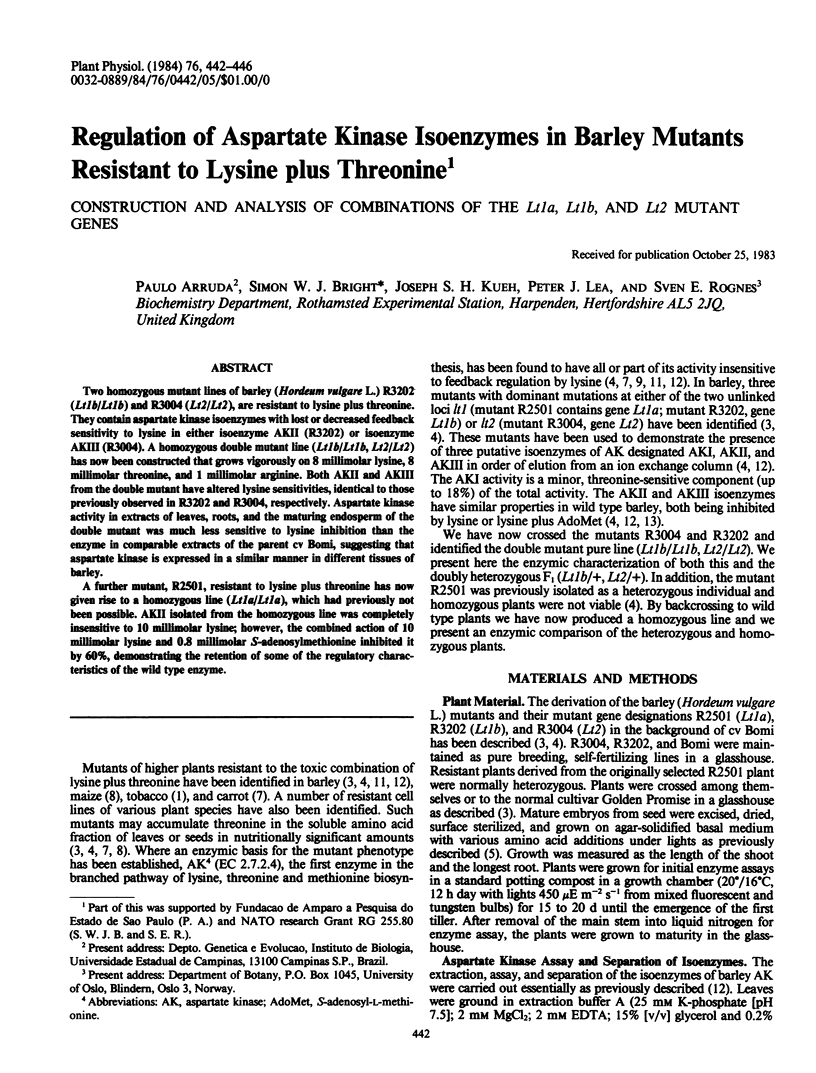
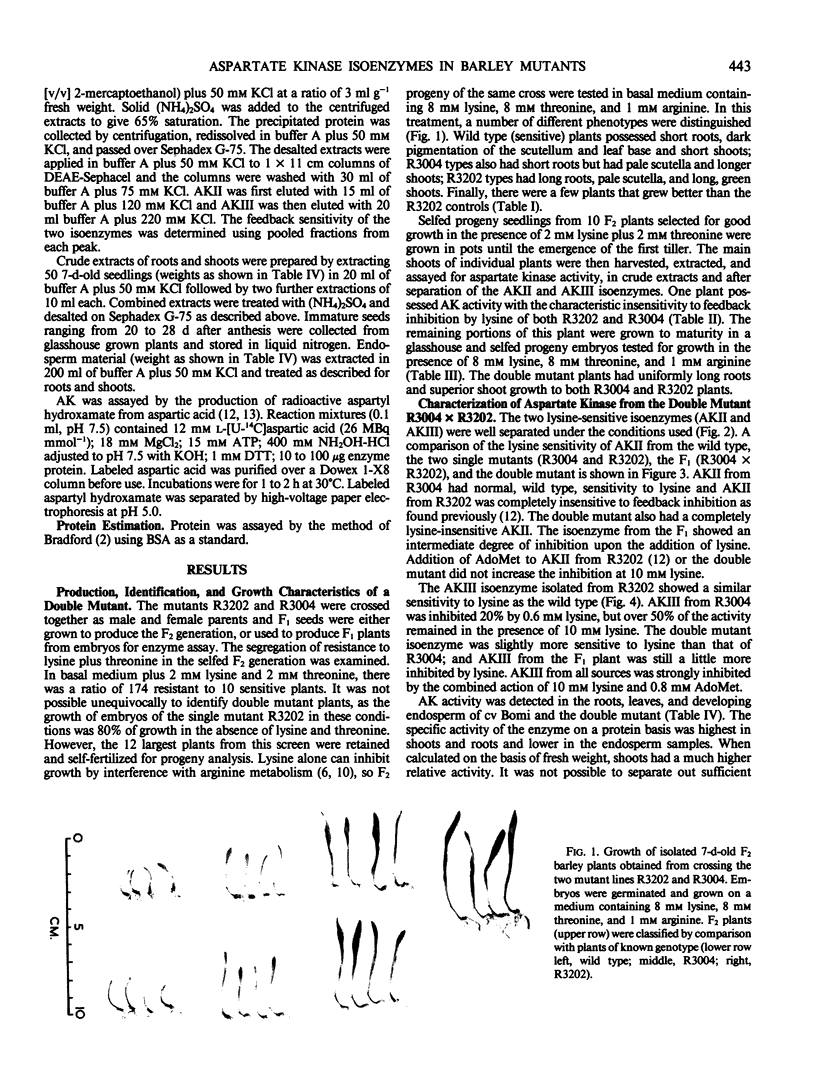
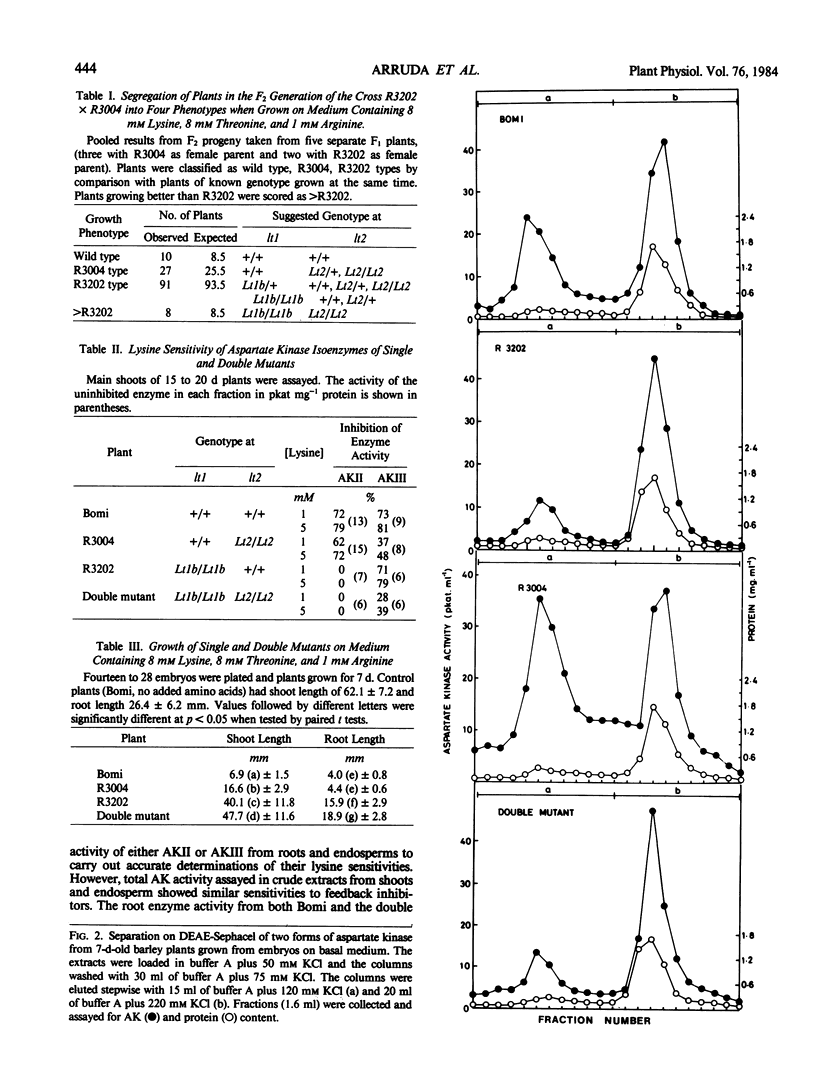
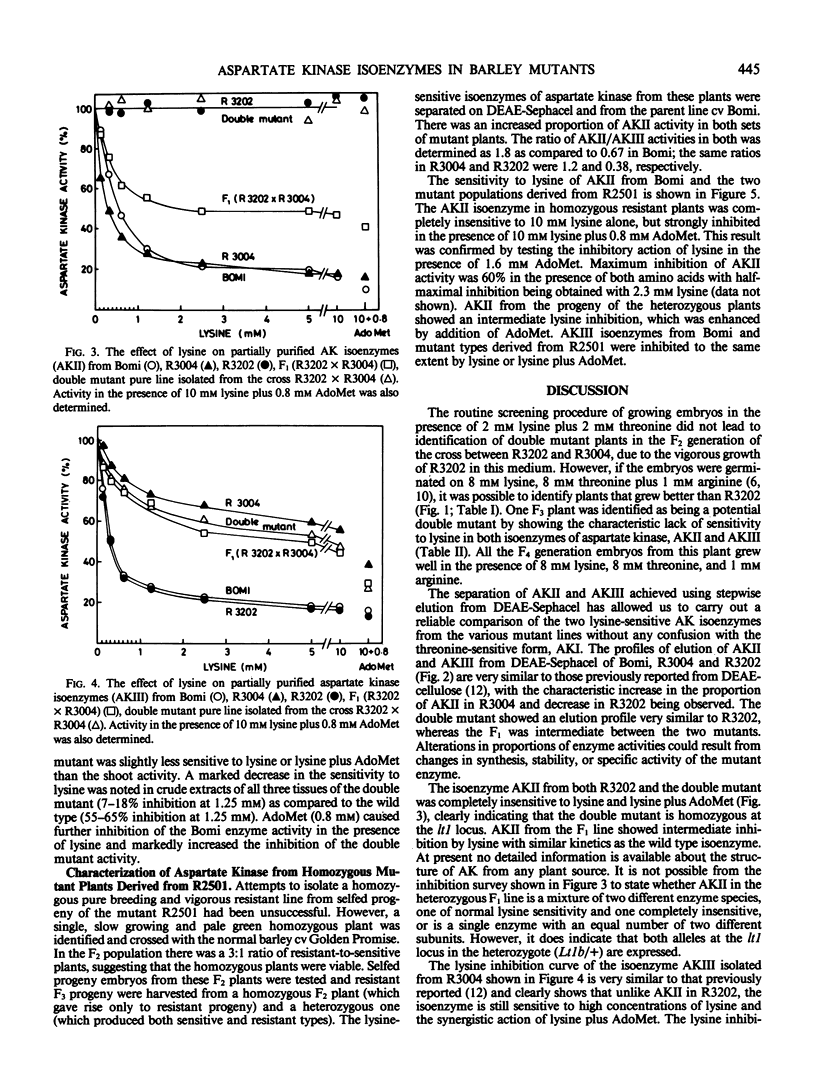
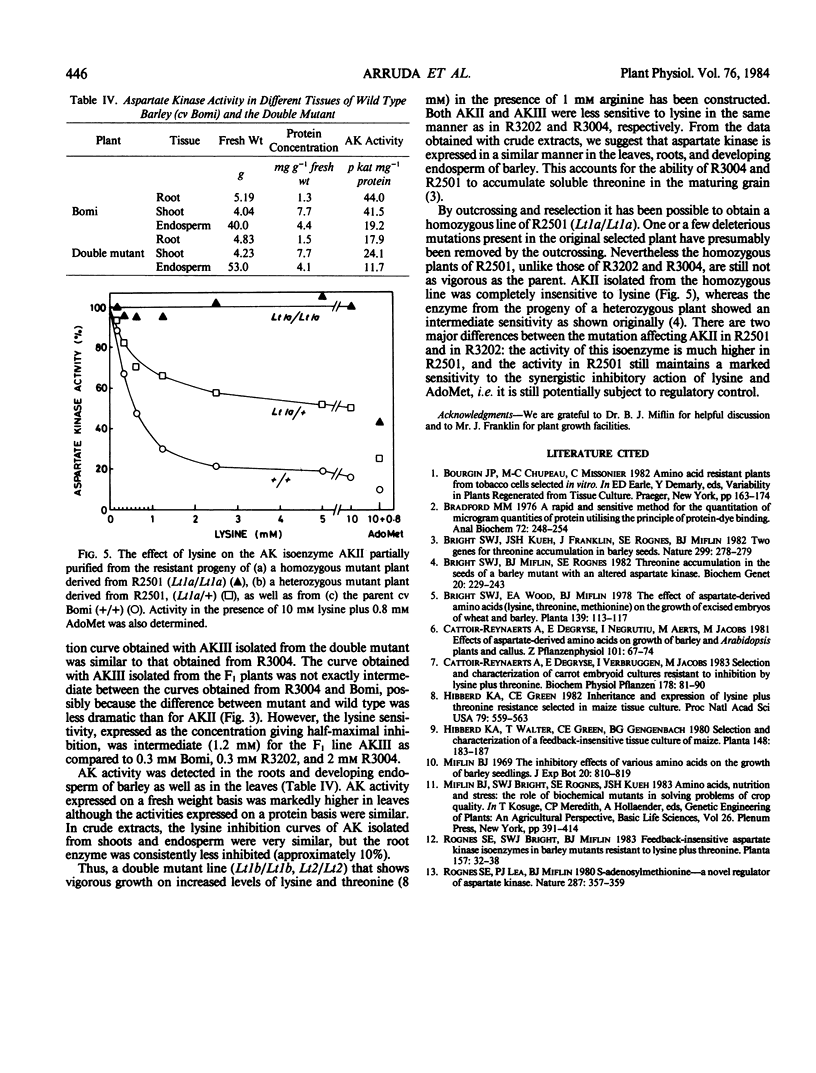
Images in this article
Selected References
These references are in PubMed. This may not be the complete list of references from this article.
- Bradford M. M. A rapid and sensitive method for the quantitation of microgram quantities of protein utilizing the principle of protein-dye binding. Anal Biochem. 1976 May 7;72:248–254. doi: 10.1016/0003-2697(76)90527-3. [DOI] [PubMed] [Google Scholar]
- Bright S. W., Miflin B. J., Rognes S. E. Threonine accumulation in the seeds of a barley mutant with an altered aspartate kinase. Biochem Genet. 1982 Apr;20(3-4):229–243. doi: 10.1007/BF00484421. [DOI] [PubMed] [Google Scholar]
- Hibberd K. A., Green C. E. Inheritance and expression of lysine plus threonine resistance selected in maize tissue culture. Proc Natl Acad Sci U S A. 1982 Jan;79(2):559–563. doi: 10.1073/pnas.79.2.559. [DOI] [PMC free article] [PubMed] [Google Scholar]
- Rognes S. E., Lea P. J., Miflin B. J. S-adenosylmethionine--a novel regulator of aspartate kinase. Nature. 1980 Sep 25;287(5780):357–359. doi: 10.1038/287357a0. [DOI] [PubMed] [Google Scholar]



